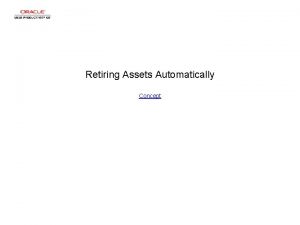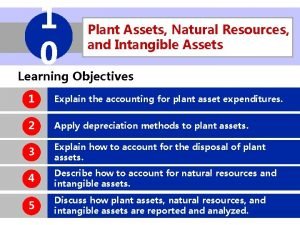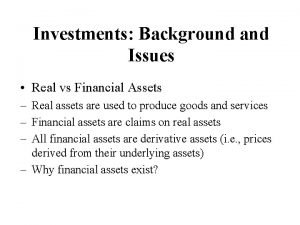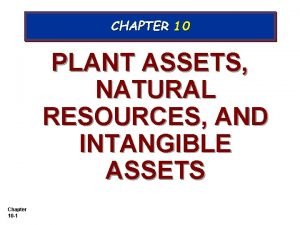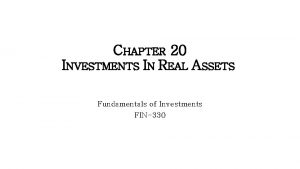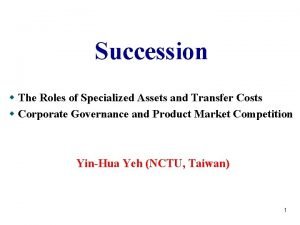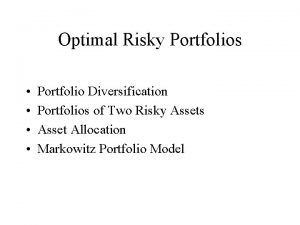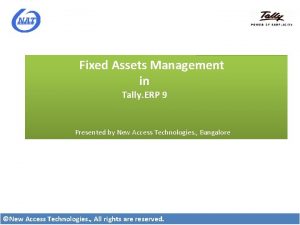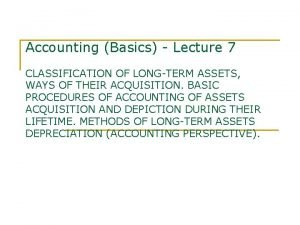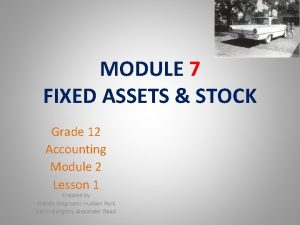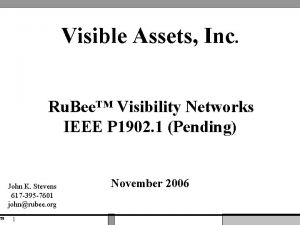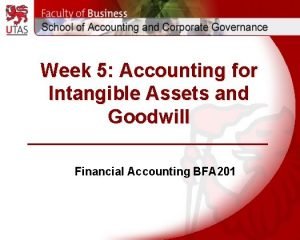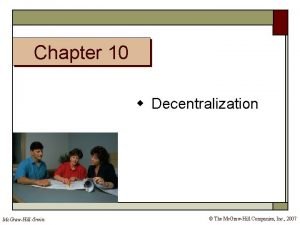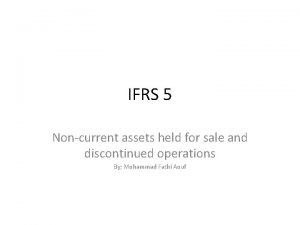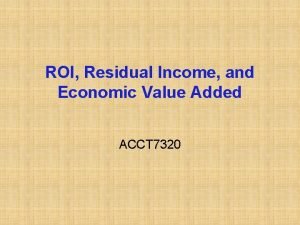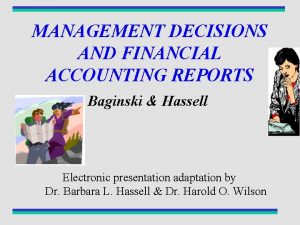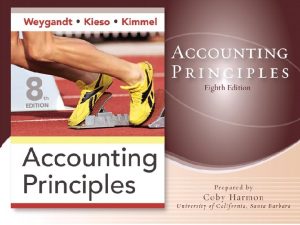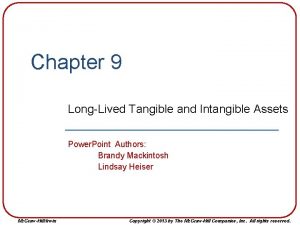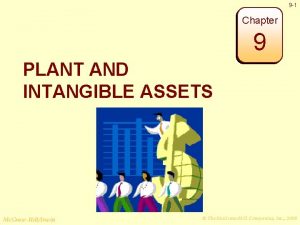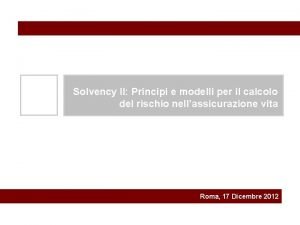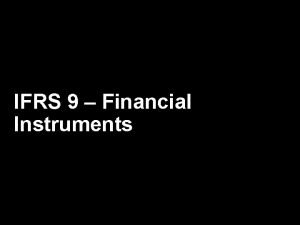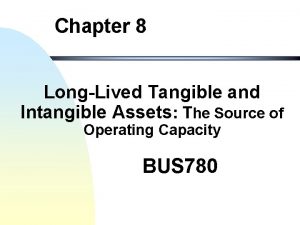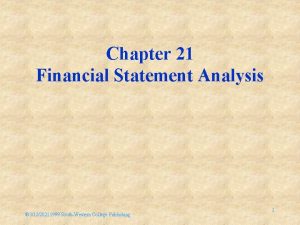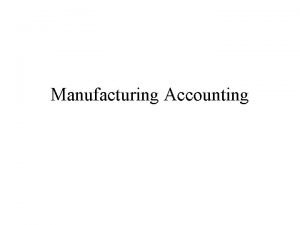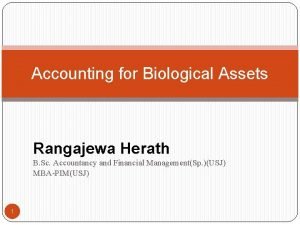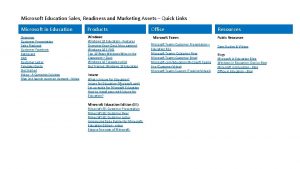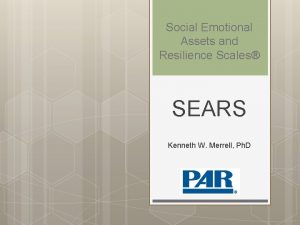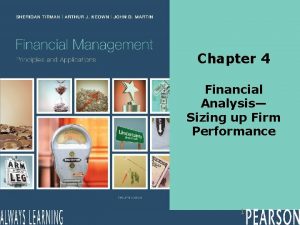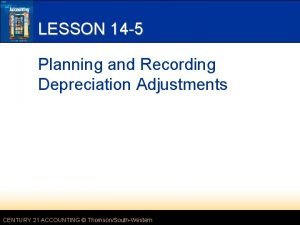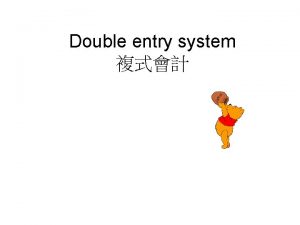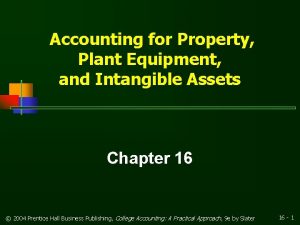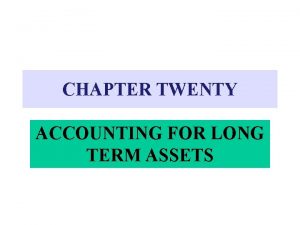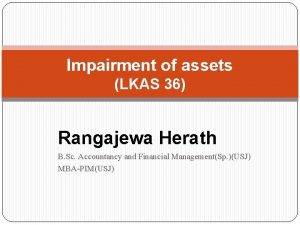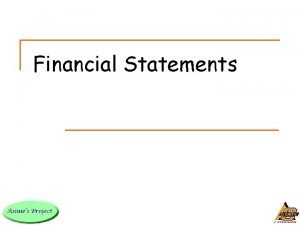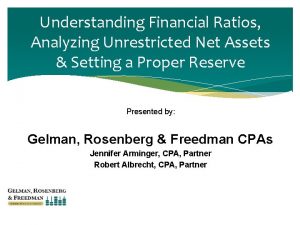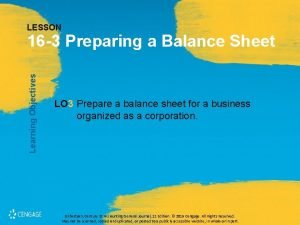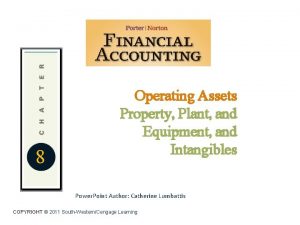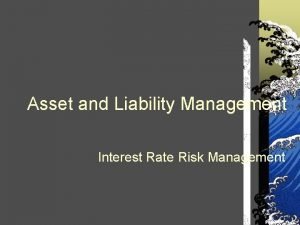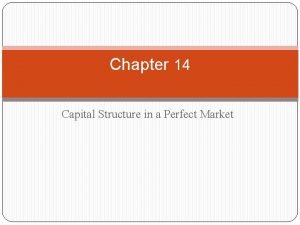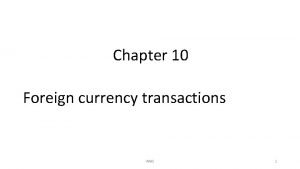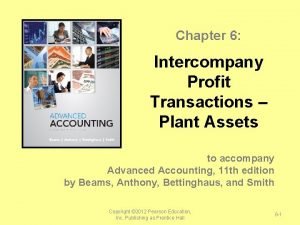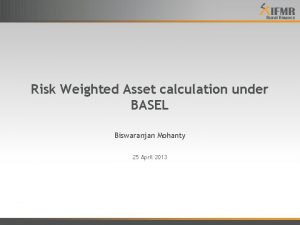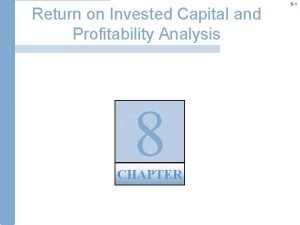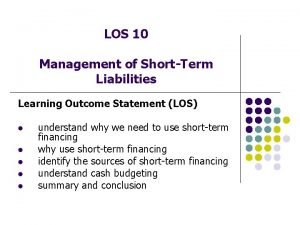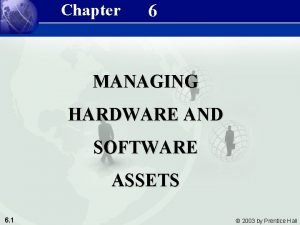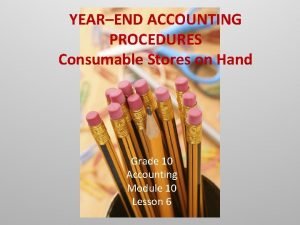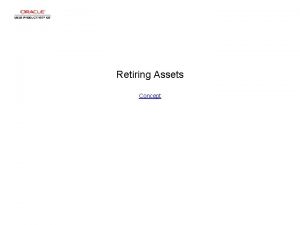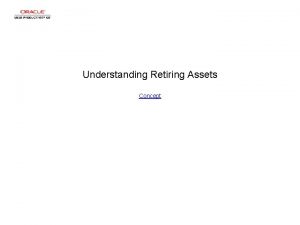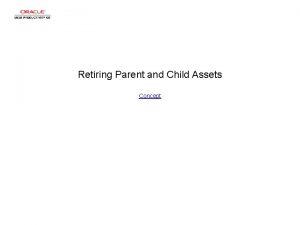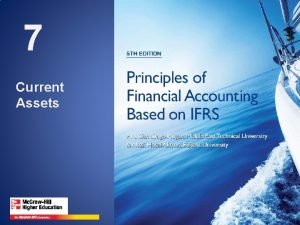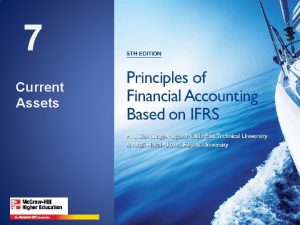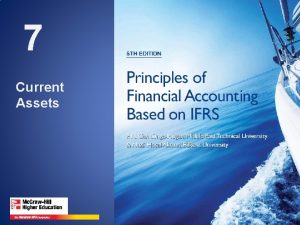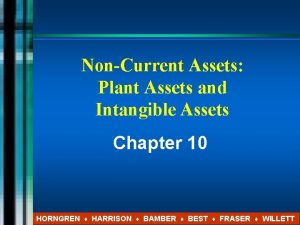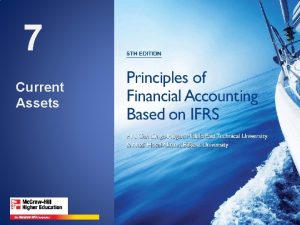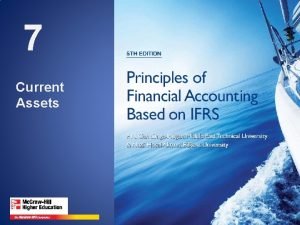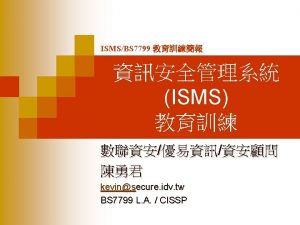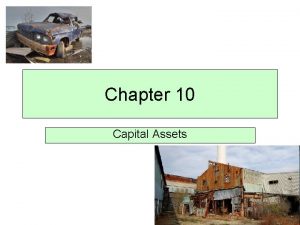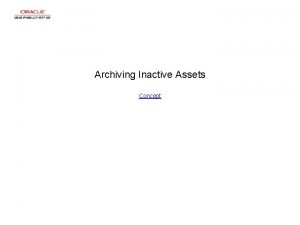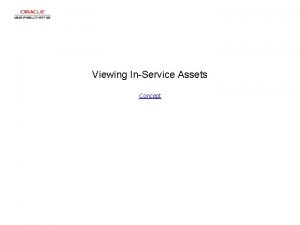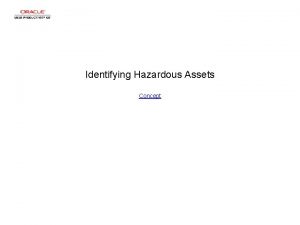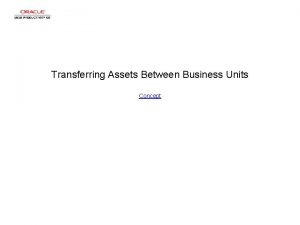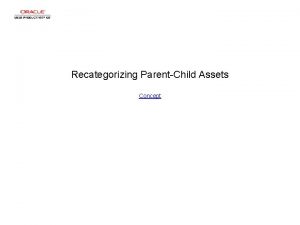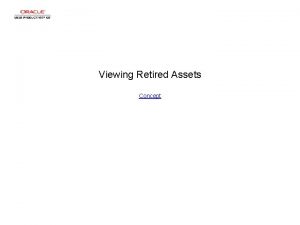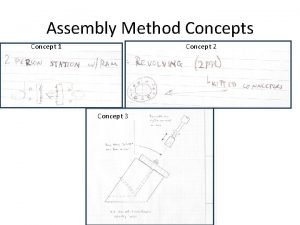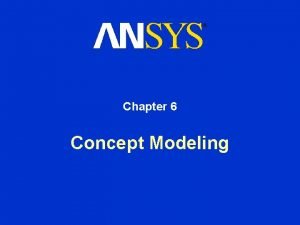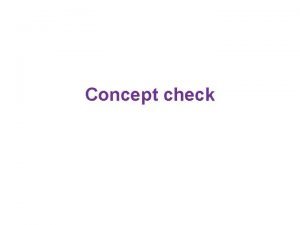Retiring Assets as a TradeIn Concept Retiring Assets







































































- Slides: 71

Retiring Assets as a Trade-In Concept

Retiring Assets as a Trade-In

Retiring Assets as a Trade-In Step 1 Begin by navigating to the Retire Assets page. Click the Scroll Down arrow.

Retiring Assets as a Trade-In Step 2 Click the Asset Management menu.

Retiring Assets as a Trade-In Step 3 Click the Asset Transactions menu.

Retiring Assets as a Trade-In Step 4 Click the Asset Disposal menu.

Retiring Assets as a Trade-In Step 5 Click the Retire/Reinstate Asset menu.

Retiring Assets as a Trade-In Step 6 Click in the Asset Identification field.

Retiring Assets as a Trade-In Step 7 Enter the desired information into the Asset Identification field. Enter "EX_000000223".

Retiring Assets as a Trade-In Step 8 Click the Search button.

Retiring Assets as a Trade-In Step 9 Use the Retire Assets page to retire or reinstate an asset.

Retiring Assets as a Trade-In Step 10 Use the Retire As field to specify the type of retirement transaction. Click the Retire As list.

Retiring Assets as a Trade-In Step 11 Click the Traded In for another Asset list item.

Retiring Assets as a Trade-In Step 12 Click the Go button.

Retiring Assets as a Trade-In Step 13 The Disposal Code field displays the retirement type that you selected. The application calculates gain or loss amounts based on the disposal code.

Retiring Assets as a Trade-In Step 14 Click in the Proceeds field.

Retiring Assets as a Trade-In Step 15 Use the Proceeds field to enter the amount of the proceeds for the transaction. For this example, the trade-in value of the automobile is 5, 000 USD. Enter the desired information into the Proceeds field. Enter "5000".

Retiring Assets as a Trade-In Step 16 Click the Save button.

Retiring Assets as a Trade-In Step 17 Next, navigate to the Depreciation Calculation page. Click the Asset Management menu bar.

Retiring Assets as a Trade-In Step 18 Click the Depreciation menu.

Retiring Assets as a Trade-In Step 19 Click the Processing menu.

Retiring Assets as a Trade-In Step 20 Click the Calculate menu.

Retiring Assets as a Trade-In Step 21 You can run this process by searching for an existing run control ID or you can add a new value. Creating a run control ID that is relevant to the process may help you remember it for future use. Click the Add a New Value tab.

Retiring Assets as a Trade-In Step 22 A run control ID is an identifier that, when paired with your user ID, uniquely identifies the process that you are running. The run control ID defines parameters that are used when a process is run. This ensures that when a process runs in the background, the system does not prompt you for additional values. Enter the desired information into the Run Control ID field. Enter "tradein".

Retiring Assets as a Trade-In Step 23 Click the Add button.

Retiring Assets as a Trade-In Step 24 Use the Depreciation Calculation page to enter the request parameters. These parameters will be used to define the processing rules and data to be included when the process is run.

Retiring Assets as a Trade-In Step 25 Click the Process Frequency list.

Retiring Assets as a Trade-In Step 26 Click the Once list item.

Retiring Assets as a Trade-In Step 27 Click in the Unit field.

Retiring Assets as a Trade-In Step 28 Enter the desired information into the Unit field. Enter "US 001".

Retiring Assets as a Trade-In Step 29 Click in the From Asset ID field.

Retiring Assets as a Trade-In Step 30 Use the From Asset ID field to specify the beginning asset of the range of assets being retired. Enter the desired information into the From Asset ID field. Enter "EX_000000223".

Retiring Assets as a Trade-In Step 31 If you are retiring a single asset, you can leave the To Asset ID field blank. The field will then have the same value as the From Asset ID field by default.

Retiring Assets as a Trade-In Step 32 Click the Run button.

Retiring Assets as a Trade-In Step 33 Use the Process Scheduler Request page to enter or update parameters, such as server name and process output format.

Retiring Assets as a Trade-In Step 34 You must select a server name to identify the server on which the process will run. If you use the same run control ID for subsequent processes, the server name that you last used will be the default in this field. Click the Server Name list.

Retiring Assets as a Trade-In Step 35 Click the PSNT list item.

Retiring Assets as a Trade-In Step 36 Click the OK button.

Retiring Assets as a Trade-In Step 37 Notice that a Process Instance number appears. This number helps you identify the process that you have run when you check its status.

Retiring Assets as a Trade-In Step 38 Click the Process Monitor link.

Retiring Assets as a Trade-In Step 39 Use the Process List page to view the status of submitted process requests.

Retiring Assets as a Trade-In Step 40 The current Run Status of the process is Queued. The process is finished when the status is Success.

Retiring Assets as a Trade-In Step 41 Continue to click the Refresh button until the status is Success. Click the Refresh button.

Retiring Assets as a Trade-In Step 42 Note that the Run Status is now Success.

Retiring Assets as a Trade-In Step 43 Next, navigate to the Cost/Asset Information page. Click the Asset Management menu bar.

Retiring Assets as a Trade-In Step 44 Click the Asset Transactions menu.

Retiring Assets as a Trade-In Step 45 Click the Owned Assets menu.

Retiring Assets as a Trade-In Step 46 Click the Express Add menu.

Retiring Assets as a Trade-In Step 47 Click the Add button.

Retiring Assets as a Trade-In Step 48 The Cost/Asset Information page enables you to specify information about how an asset is capitalized. After you save this page, you cannot add or change information on this page.

Retiring Assets as a Trade-In Step 49 Use the Profile ID field to specify the profile that contains default information for your asset. For this exercise, you want the default information for machinery. Therefore, you need to use the profile ID MACHINERY. Click the MACHINERY list item.

Retiring Assets as a Trade-In Step 50 Click in the Description field.

Retiring Assets as a Trade-In Step 51 Enter the desired information into the Description field. Enter "Machinery".

Retiring Assets as a Trade-In Step 52 Click in the Location field.

Retiring Assets as a Trade-In Step 53 Use the Location field to identify the asset location by selecting from a list of valid values. Identification of the asset location is required for managing hazardous material assets, which must often be monitored and reported on. This field is automatically populated with the ship-from location for VAT-enabled business units. Enter the desired information into the Location field. Enter "US 002".

Retiring Assets as a Trade-In Step 54 Use the Trans Code field to identify how the asset was acquired. Click the Trans Code list.

Retiring Assets as a Trade-In Step 55 Click the Trade-in list item.

Retiring Assets as a Trade-In Step 56 Click in the Cost field.

Retiring Assets as a Trade-In Step 57 Use the Cost field to specify the asset cost. You can break down the total asset cost into multiple transactions and specify a cost for each transaction. For example, you could break down the cost of a computer into the cost of a monitor, a CPU, or software. You need to specify one or more rows of cost information before adding asset information. Enter the desired information into the Cost field. Enter "80000".

Retiring Assets as a Trade-In Step 58 Use the Default Profile button to capitalize the asset. Click the Default Profile button.

Retiring Assets as a Trade-In Step 59 Notice that the application capitalized the asset and created asset books that are associated with the profile ID. Each asset book contains a cost row.

Retiring Assets as a Trade-In Step 60 Click the scrollbar.

Retiring Assets as a Trade-In Step 61 Use the Acquisition Code list to identify how this asset was acquired. Click the Acquisition Code list.

Retiring Assets as a Trade-In Step 62 Click the Trade In list item.

Retiring Assets as a Trade-In Step 63 Click the Refresh Like Kind & Trade In button.

Retiring Assets as a Trade-In Step 64 Note that after you click the Refresh Like Kind & Trade In button, the Asset Id field appears, prompting you for the asset ID for the asset that you retired by trade-in. Click in the Asset Id field.

Retiring Assets as a Trade-In Step 65 Use the Asset Id field to identify the asset that was traded in to acquire this new asset. Enter the desired information into the Asset Id field. Enter "EX_000000223".

Retiring Assets as a Trade-In Step 66 Click the Save button.

Retiring Assets as a Trade-In Step 67 Click the scrollbar.

Retiring Assets as a Trade-In Step 68 Notice that the new asset was assigned a new Asset ID.

Retiring Assets as a Trade-In Step 69 You have successfully retired an asset as a trade-in. End of Procedure.
 Retiring assets
Retiring assets Plant assets, natural resources, and intangible assets
Plant assets, natural resources, and intangible assets Plant assets are
Plant assets are Real assets versus financial assets
Real assets versus financial assets Plant assets natural resources and intangible assets
Plant assets natural resources and intangible assets Real assets vs financial assets
Real assets vs financial assets Financial assets examples
Financial assets examples Real assets and financial assets ppt
Real assets and financial assets ppt What is the difference between actual self and ideal self
What is the difference between actual self and ideal self Pengertian pemasaran
Pengertian pemasaran Producing a musical costs $88 000
Producing a musical costs $88 000 Scope of registered valuer
Scope of registered valuer Co-specialized assets
Co-specialized assets Ninja stock
Ninja stock Optimal portfolio diversification
Optimal portfolio diversification Fixed assets in tally
Fixed assets in tally Other long term assets
Other long term assets Bonds and other financial assets
Bonds and other financial assets New era accounting grade 12 memo pdf module 4
New era accounting grade 12 memo pdf module 4 Visible assets inc
Visible assets inc Aasb 138 intangible assets
Aasb 138 intangible assets Operating assets formula
Operating assets formula Assets held for sale
Assets held for sale Calculate residual income
Calculate residual income Myfinancelab solutions chapter 15
Myfinancelab solutions chapter 15 Return on assets
Return on assets Fixed assets property plant equipment
Fixed assets property plant equipment Accounting in action chapter 1
Accounting in action chapter 1 Align assets
Align assets Tangible assets examples
Tangible assets examples Is a cornerstone in the protection of information assets
Is a cornerstone in the protection of information assets Economic asset meaning
Economic asset meaning Franchise amortization
Franchise amortization Book value accounting
Book value accounting Plant and intangible assets chapter 9
Plant and intangible assets chapter 9 Stranded assets
Stranded assets Capital + liabilities = assets
Capital + liabilities = assets Financial assets ifrs
Financial assets ifrs Tax payable in cash flow statement
Tax payable in cash flow statement Long lived tangible assets
Long lived tangible assets Return on assets
Return on assets Value driven professional
Value driven professional Asset recovery agency
Asset recovery agency Manufacturing assets in accounting
Manufacturing assets in accounting Biological assets
Biological assets Microsoft marketing assets
Microsoft marketing assets Social emotional assets and resilience scales pdf
Social emotional assets and resilience scales pdf Chapter 9 plant and intangible assets
Chapter 9 plant and intangible assets Asset turnover ratio formula
Asset turnover ratio formula Recorded depreciation expense on the plant assets
Recorded depreciation expense on the plant assets What is double entry
What is double entry Property, plant, and equipment and intangible assets are
Property, plant, and equipment and intangible assets are Other long term assets
Other long term assets Movie maker 2011
Movie maker 2011 Lkas 36 impairment of assets
Lkas 36 impairment of assets Current assets examples
Current assets examples Another name for statement of financial position
Another name for statement of financial position Liquid unrestricted net assets
Liquid unrestricted net assets How does threegreen classify its assets?
How does threegreen classify its assets? Operating assets examples
Operating assets examples Repriceable assets
Repriceable assets Media assets in games
Media assets in games Unlevered return on assets
Unlevered return on assets What shape is the utility of a risk-averse investor?
What shape is the utility of a risk-averse investor? Non monetary assets
Non monetary assets Intercompany profit transactions plant assets
Intercompany profit transactions plant assets How to calculate risk weighted assets
How to calculate risk weighted assets Return on invested capital and profitability analysis
Return on invested capital and profitability analysis Return on average assets
Return on average assets A flexible short term financial policy
A flexible short term financial policy Managing hardware and software assets
Managing hardware and software assets What is consumable stores
What is consumable stores
